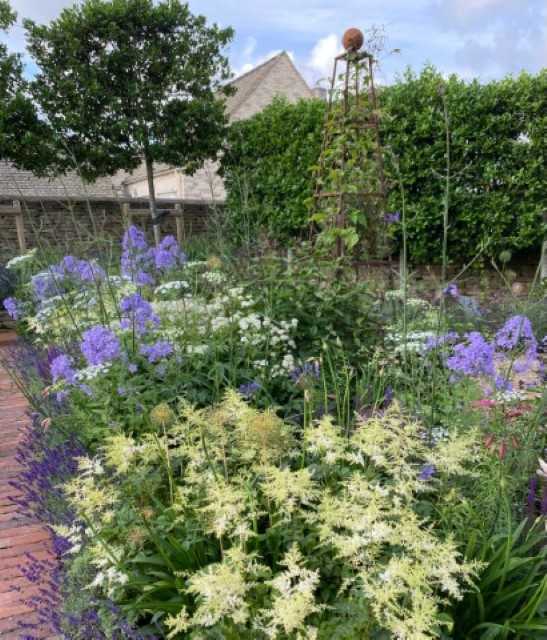
Autumn: Rethinking your planting design
Lesley Ann Sandbach
The courtyard garden in July...
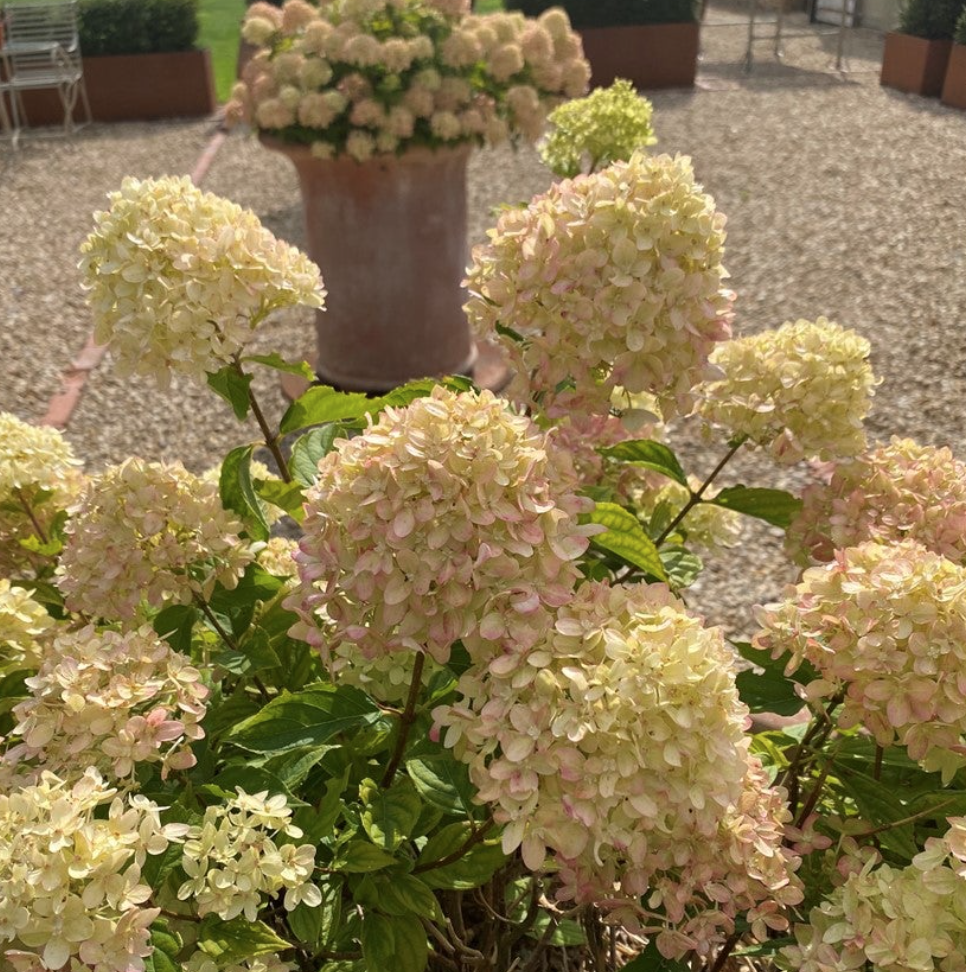
...one of the best, Hydrangea ‘Little Lime’ is happy in a pot
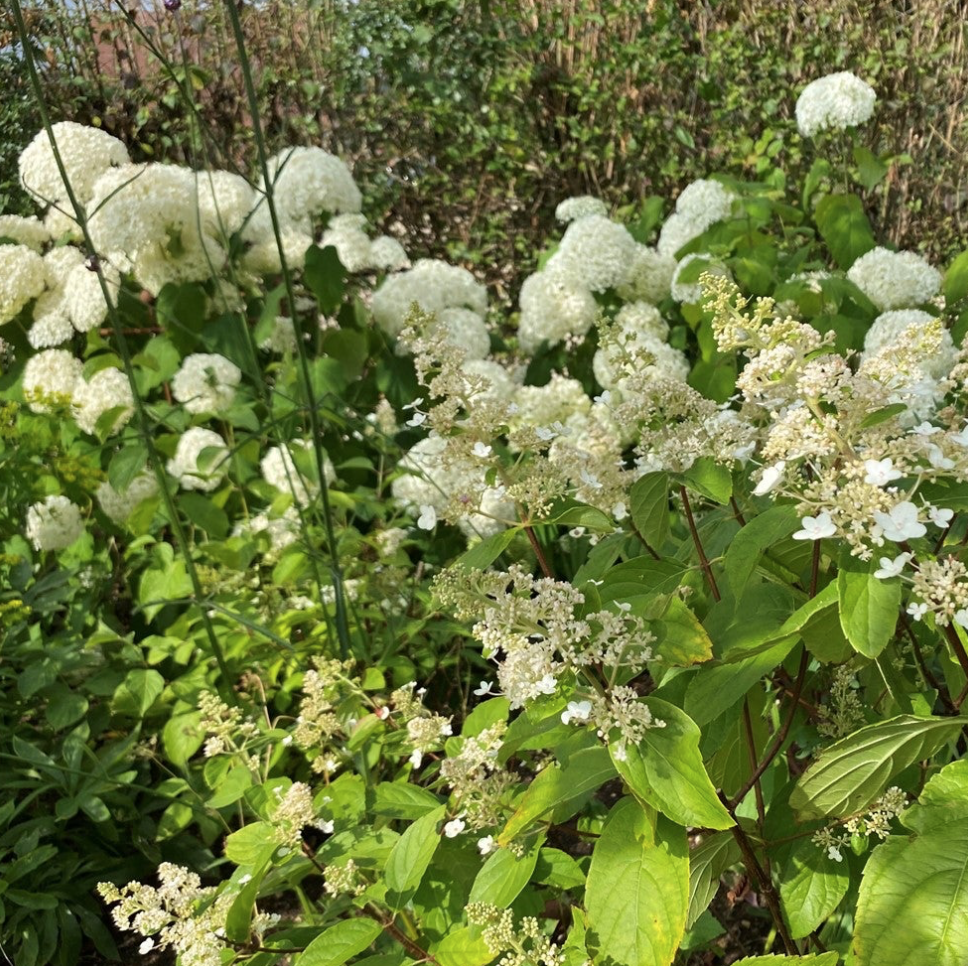
Hydrangeas are at their best now.
I have spent the summer visiting other gardens and coming back to take a fresh look at my own. I have been rethinking beds that aren’t quite right and planning a new one that will give me a chance to experiment with bolder colour. Here are my thoughts in case you were thinking of doing the same and needed some inspiration!
I have always restricted the palette I use in the courtyard garden outside the house. The hard landscaping is gravel, brick and a creamy limestone and I have used plants in the creamy white, lavender/purple and green range (from the humble Alchemilla mollis to Hydrangea ‘Little Lime’ which puts on a long-lasting show in Italian Terrace terracotta pots).
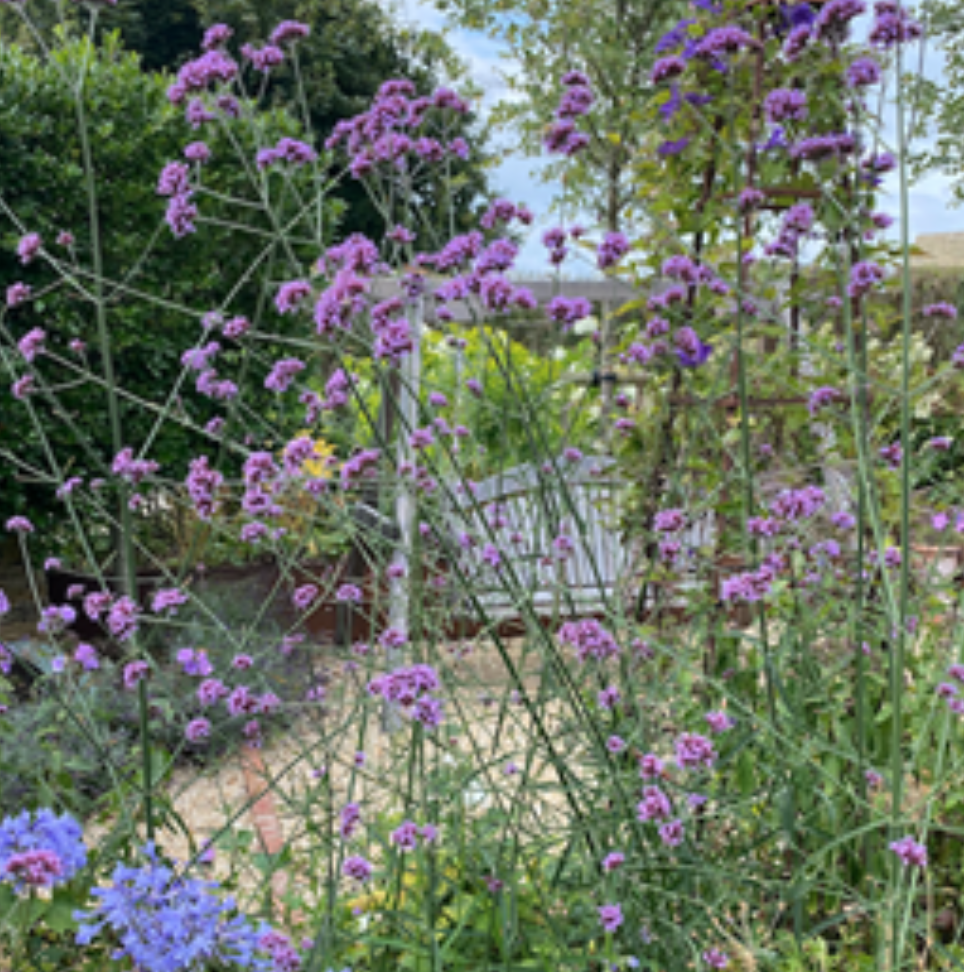
Verbena bonariensis provides a hazy cloud of purple in the border.
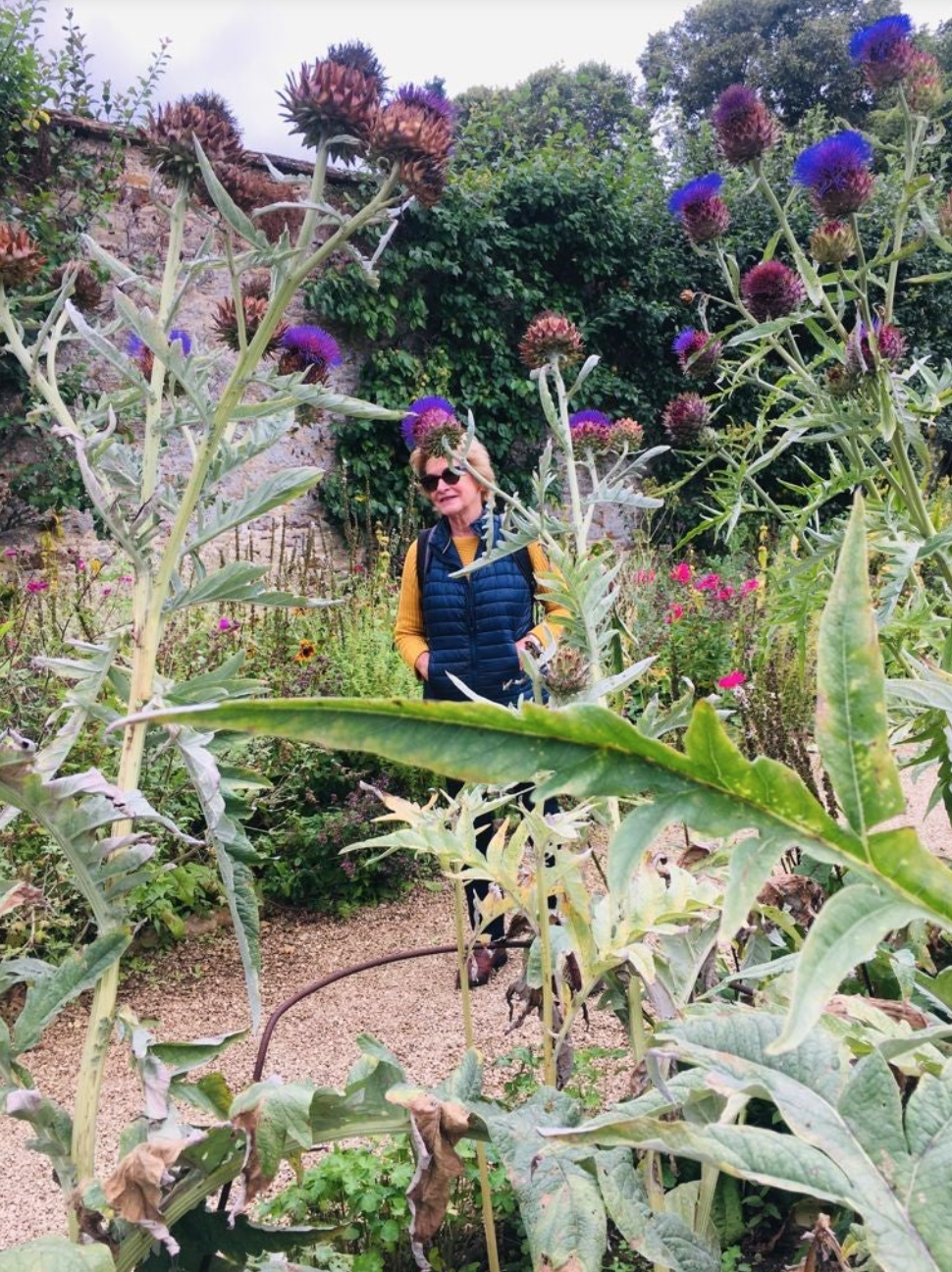
Admiring the stunning heads of cardoons (a close cousin of the artichoke) in the gardens of Rousham Park House.
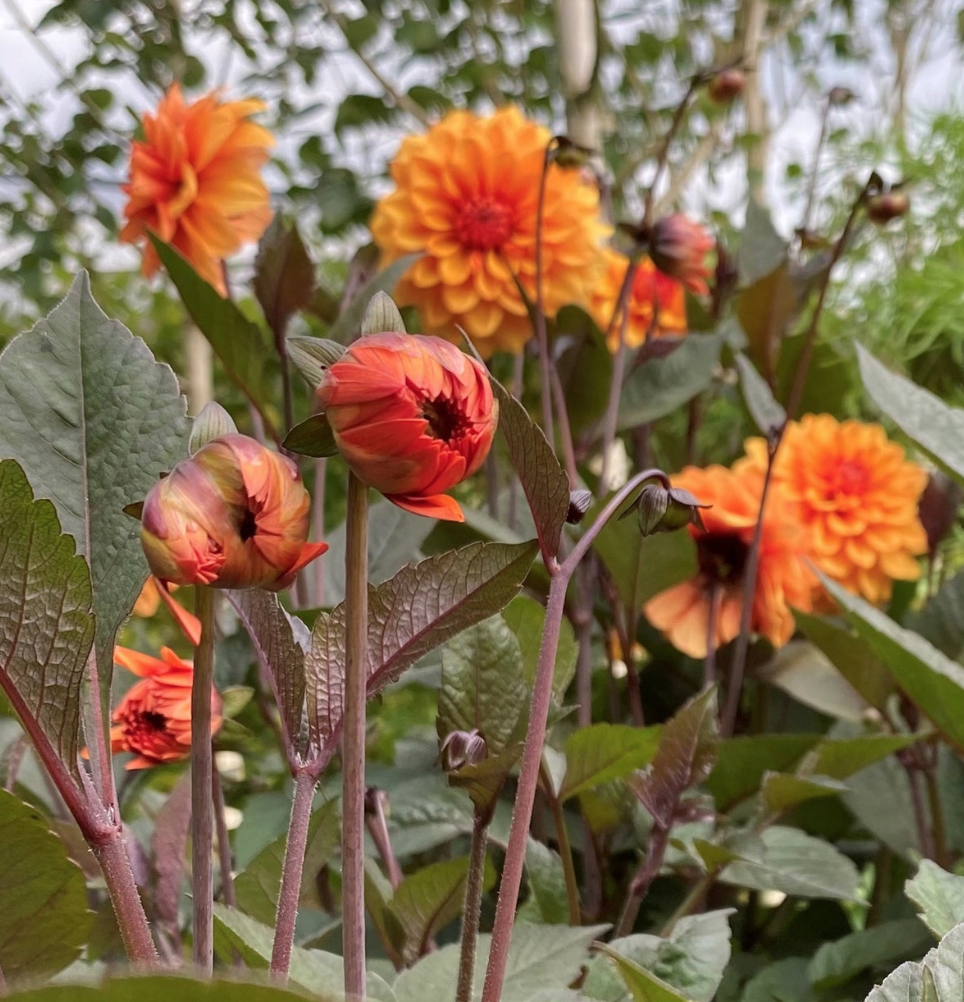
Dahlia ‘David Howard’ earns its place in the cutting garden.
The hydrangeas in the big border are at their best this month – Annabelle, at the back of the border, is grown through our XL Hydrangea Supports which keeps her upright while still allowing her graceful form to show to advantage. Verbena bonariensis, which self-seeds happily in my garden, is in full flower with its tall stems and purple flowers providing a hazy screen to the hard edges of the border.
However, this year I have found myself thinking of adding a splash of colour here and there. The Alchemilla mollis, after four years, is out of control at the front of the border and my mind was already turning to how I could replace most of it when I visited Heckfield Place in July for a day’s botanical painting with Mary-Ellen Taylor, a good friend and an inspirational teacher. During one of the breaks, I wandered out into the hotel’s magnificent gardens and there, in the midst of borders with exactly my colour palette, were hotspots of Geum ‘Totally Tangerine’, just the colour I had been imagining!
This autumn we are expanding the area where we store our plant supports and I have taken advantage of the changes to plan a new yew hedge to hide the ‘yard’ from the house and to put in a new border. The border is immediately in front of the yew hedge, which will provide a beautiful dark backdrop for some strong colour. It also faces the wild flower meadow, which means I need to make the planting appropriate to the more natural part of the garden, and to take into account that it is on the deers’ favourite route to my raised vegetable bed! I also want to extend the season with flowers and foliage that I can cut for the house without ruining the display.
The border is about 20 meters long and a little over 1 meter wide so I shall make a feature of three of our 2.5m Cotswold obelisks up which I shall grow:
-
warm apricot Rosa ‘Keith Maughan’ from Peter Beales twinned with purple clematis: ‘Etoile Violette’, Jackmanii’ and ‘Duchess of Cornwall’ are all on my shortlist
-
in the other two I shall experiment with cultivated blackberries: ‘Loch Ness’, ‘Navaho’ and ‘Merton Thornless’ supplied by Crocus Plants all seem suitable in height and vigour for my obelisks
In the rest of the border, height and drama will be provided by:
-
Artichoke ‘Violet de Provence’ (both for eating and for cutting)
-
Bronze fennel (I wouldn’t allow it into other parts of the garden as it is a thug but here it can throw its prolific seeds into the wild flower meadow with my blessing and it is a lovely, feathery plant for cutting)
-
Herbs: tender lemon verbena (pretty growth and wonderful for tissanes – I shall take cuttings in the autumn); green and purple sage and rosemary near the front where I can pick generous handfuls and allow the sage to flower
-
Nepeta, another favourite of mine, but Nepeta ‘Six Hills Giant’ has almost overwhelmed another border so I opted for Nepeta Neptune ‘Bokratune’ from Crocus Plants
-
Buddleia ‘Blue Indigo’, a new, dwarf form that is an intense purple – bees and butterflies love it
-
Asters: the gentle, late colours of Aster frikartii ‘Monch’ (a great favourite of mine which I was never able to grow on the sandy soil of our Surrey garden) alongside Aster Symphyotrich ‘Little Carlow’ with its generous violet heads. A visit to the Old Court Nursery web site is a must for anyone who loves asters. I paid the nursery a visit this summer and was stunned by the variety of the asters carefully tended by Helen Picton and Maggie, her helpful collie
-
Campanula lactiflora ‘Pritchard’s Variety’ – a lovely lavender purple and good for cutting – and in this new border I am going to try another campanula, ‘Sarashro’.
What else am I thinking about in the garden this month?
-
The wild flower meadow has been mown, the cut flowers and grasses allowed to lie in the meadow to drop their seeds (many wild flowers are annuals and grow each year from fresh seed) and then the cuttings collected (essential to stop the soil becoming enriched by the rotting material)
-
Bulbs: there’s still time to order your bulbs for planting in October (most bulbs including daffodils and alliums) and November (tulips) but don’t leave it too late as many of the popular varieties (including my favourite Narcissus Cyclamineus ‘Jenny’) sell out early
-
September to early October is the ideal time to lift and divide perennials to give them a chance to establish while the soil is still warm. Cut off and remove any top growth; work a fork gently round the plant teasing the roots free; lift the plant with as much of the root ball as possible; divide the clumps by pulling them apart by hand; teasing them apart with two forks or using a spade to slice congested clumps into fist-sized pieces. Get them back into the ground as soon as possible, water in well and give yourself a moment’s delight in your free plants
-
Harvest your vegetable crops: pick runner beans and French beans regularly when they are small and sweet; cucumbers and courgettes too need constant picking if they are to keep producing; lift potatoes and onions but some vegetables, like carrots and parsnips, benefit from being left in the ground as their flavour improves with some exposure to cold
I hope that’s given you some food for thought!
Follow us on Pinterest: www.pinterest.co.uk/plantsupports
Follow us on Instagram: www.instagram.com/muntons_plant_supports
Follow us on Facebook: https://www.facebook.com/muntonstraditionalplantsupports
